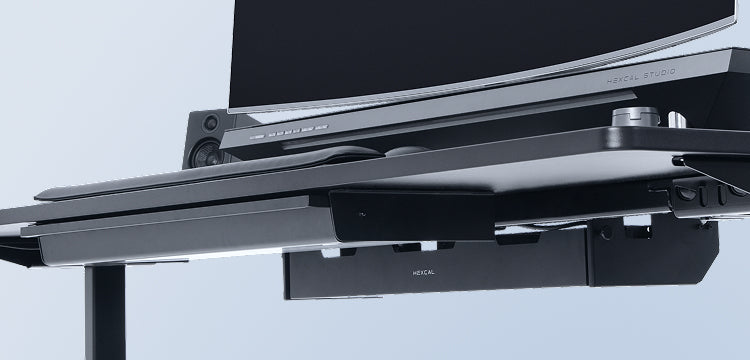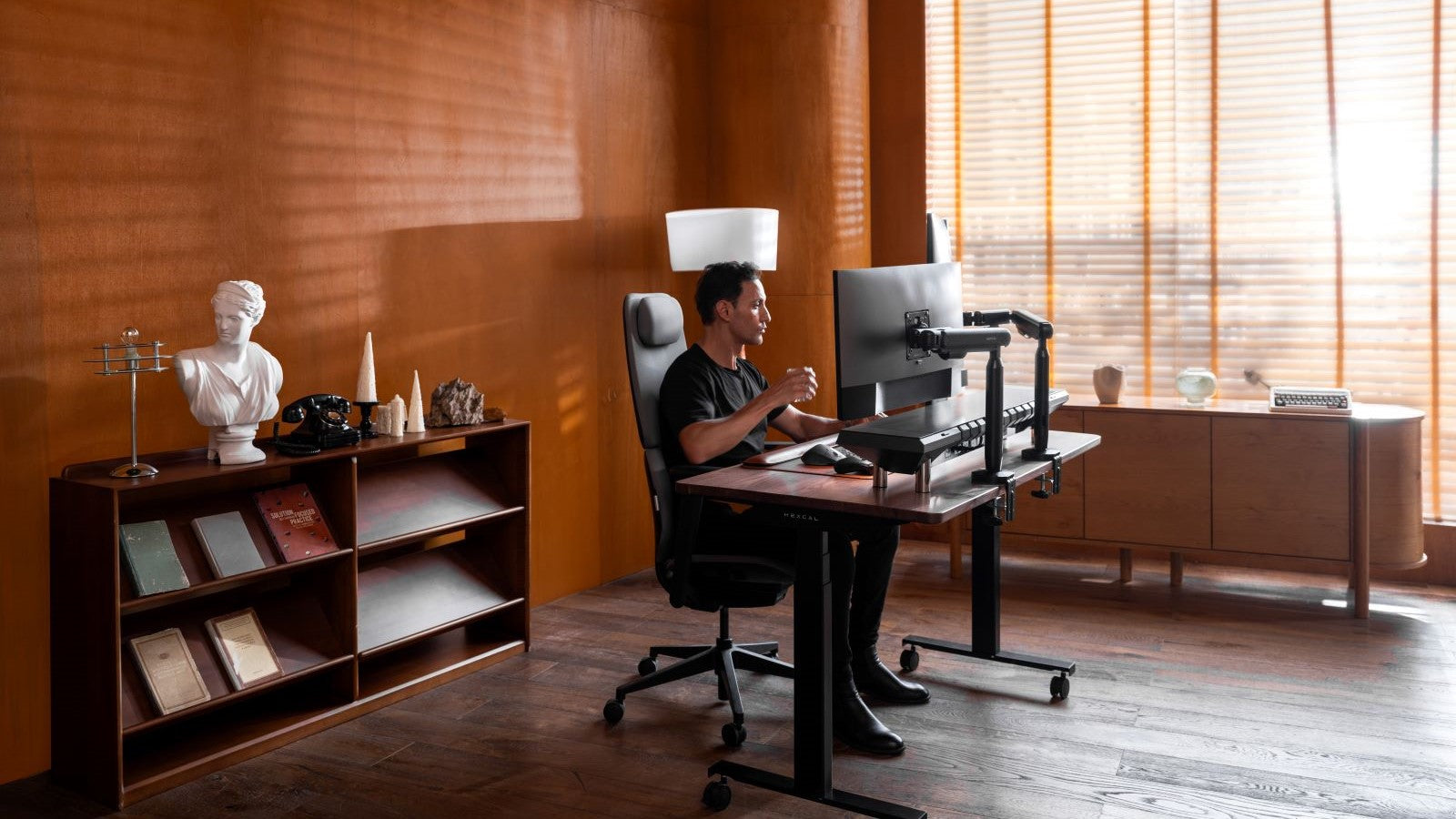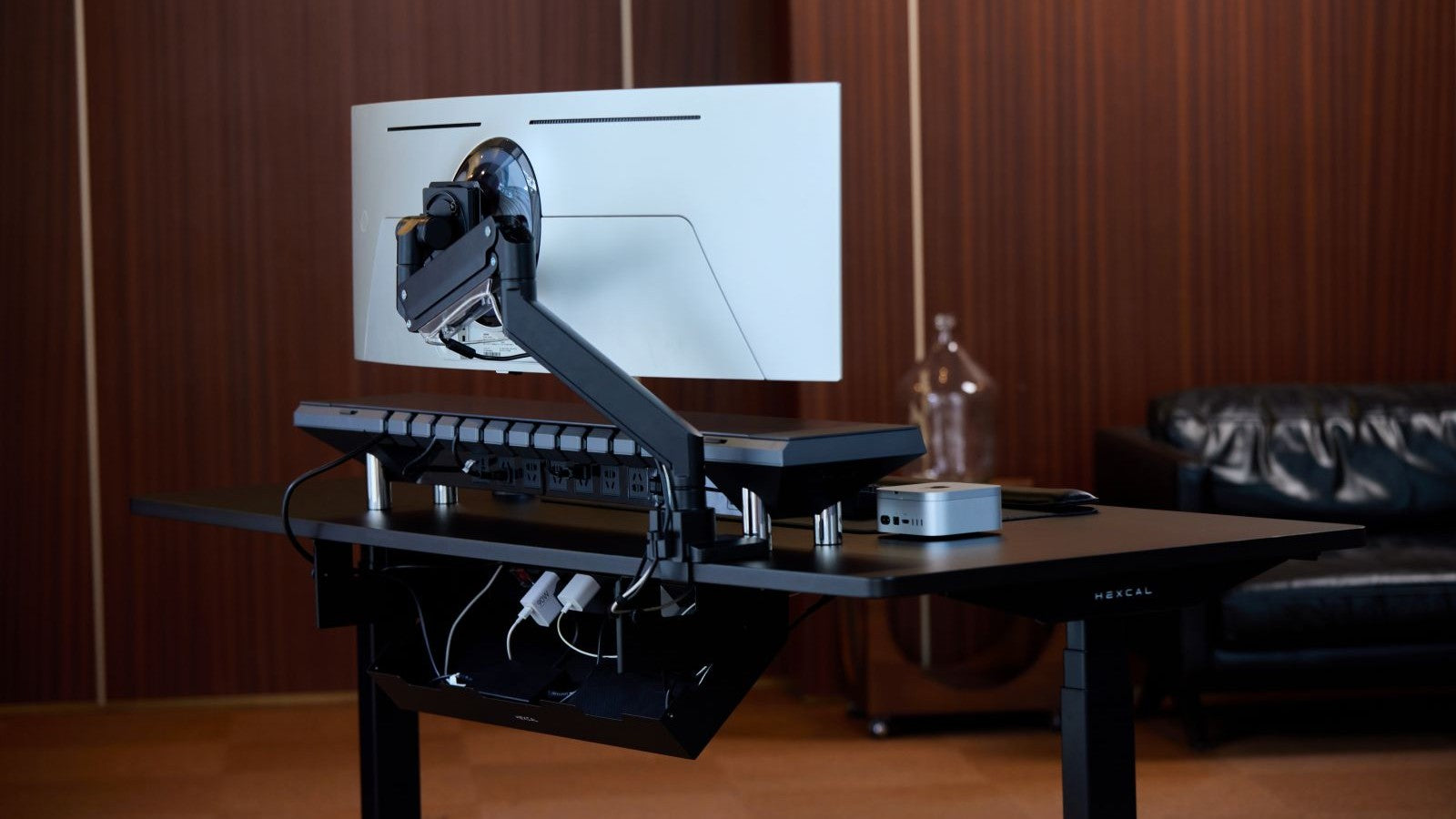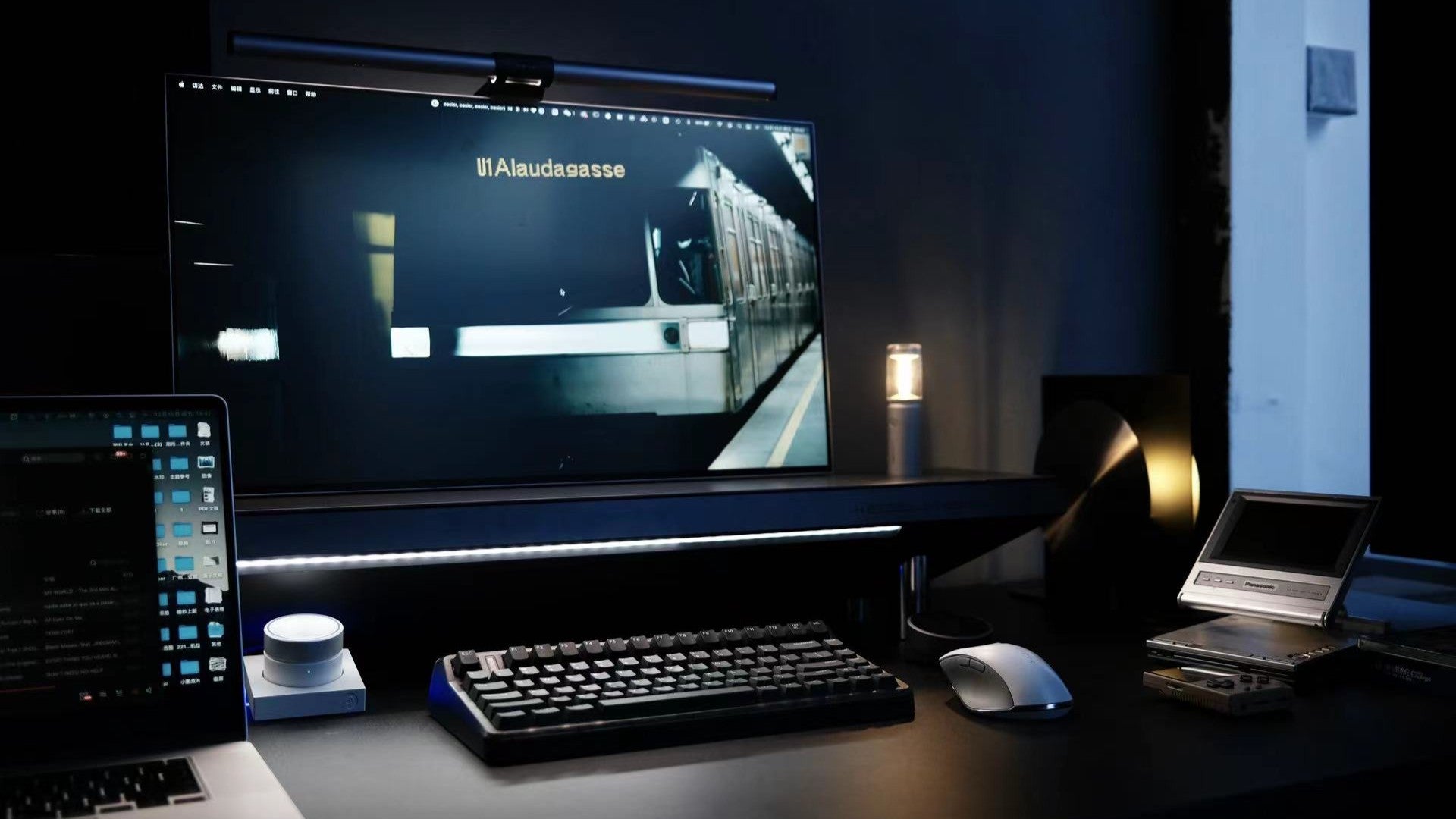Adopting a stand-up desk setup is more than just a wellness trend — it's a proven way to reduce sedentary behavior, enhance posture, and improve your ability to focus throughout the day. But even the best height-adjustable desk won’t be complete without one critical piece: a properly placed monitor.
In this guide, we’ll show you how to create a clean, ergonomic, and high-performance workspace using a stand-up desk and the perfect monitor mount, with expert insights on how to maintain posture, maximize flexibility, and select the right tools — including Hexcal’s own desk and arm solutions — to suit your workflow.
Why Monitor Mounts Matter for Standing Desks
When monitors are positioned incorrectly, they can introduce long-term strain — particularly on the neck, shoulders, and spine. For users of standing desks, this risk becomes even more pronounced when the monitor doesn’t move fluidly with the user’s posture changes.Common problems from poor screen positioning include:
- Leaning forward, leading to rounded shoulders
- Looking down, causing cervical compression
- Visual fatigue from incorrect screen distance
The right monitor arm allows seamless screen adjustments as you move from sitting to standing and back again, preserving alignment without interrupting your flow.
Why It All Starts with the Right Standing Desk
Before you consider monitor mounts, posture tips, or ergonomic extras, the first decision that matters is your standing desk. That’s because the desk sets the physical constraints and possibilities for everything else in your workspace — monitor height, keyboard placement, body position, and even how easily you can move throughout the day.A good standing desk should do more than move up and down. It should:
- Support stable posture at all heights — no shaking or wobble, especially when typing or using a monitor arm.
- Accommodate accessories like monitor arms and cable systems without compromise.
- Encourage position-switching by moving quickly and quietly enough that it becomes second nature.
- Integrate visually and functionally into your space so it invites use, not avoidance.
Poor-quality desks can actually discourage standing altogether — slow motors, unstable surfaces, or messy cabling make the experience frustrating rather than freeing.That’s why we recommend desks like the Hexcal Elevate, which are built not just to adjust height, but to support the full ecosystem of a healthy workstation — including monitor arms, studio extensions, and modular accessories. The right desk doesn’t just lift your screen — it lifts your habits.
Choosing the Best Monitor Mount for Your Setup
A quality monitor arm completes the ergonomic setup, giving you freedom to adjust the screen’s position as needed throughout the day.
What to Look for:
- Ergonomic Flexibility: Supports full tilt, height, swivel, and rotation adjustments.
- Durable Construction: Holds heavier screens without sagging or drift.
- Clean Desk Integration: Built-in cable management is essential for maintaining a tidy space.
- Mounting Options: Clamp or grommet compatibility ensures it fits securely on your desk.
- Weight Capacity & Screen Size Support: Ensure the mount fits your specific monitor dimensions.
Recommended Options:
- Supports screens up to 35" and 24 lbs
- Designed for quick positioning and fluid ergonomic movement
- Quick-release VESA plate for hassle-free installation
- Ideal for everyday office tasks, creative work, and multitasking
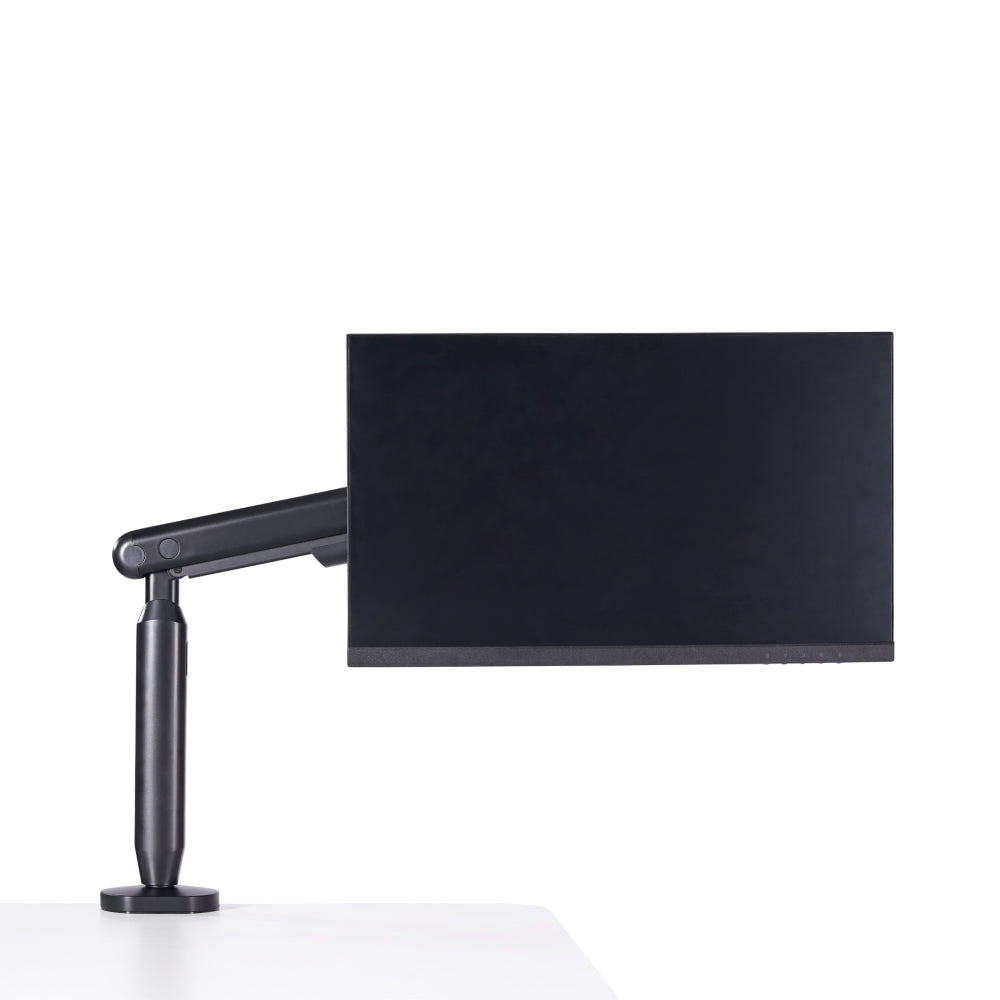
Bras pour écran unique
The Hexcal Single Monitor Arm is designed for complete control over your monitor’s positioning, whether you're working in a home office, tackling emails, or gaming for hours. This arm for monitor allows for smooth, precise adjustments, helping you find the perfect angle for ergonomic comfort and a more productive workspace.
- Built to support larger ultrawide or curved monitors up to 42" and 35 lbs
- Perfect for users who work with complex visual workflows or dual-screen productivity
- Enhanced tension control and advanced pivoting mechanics
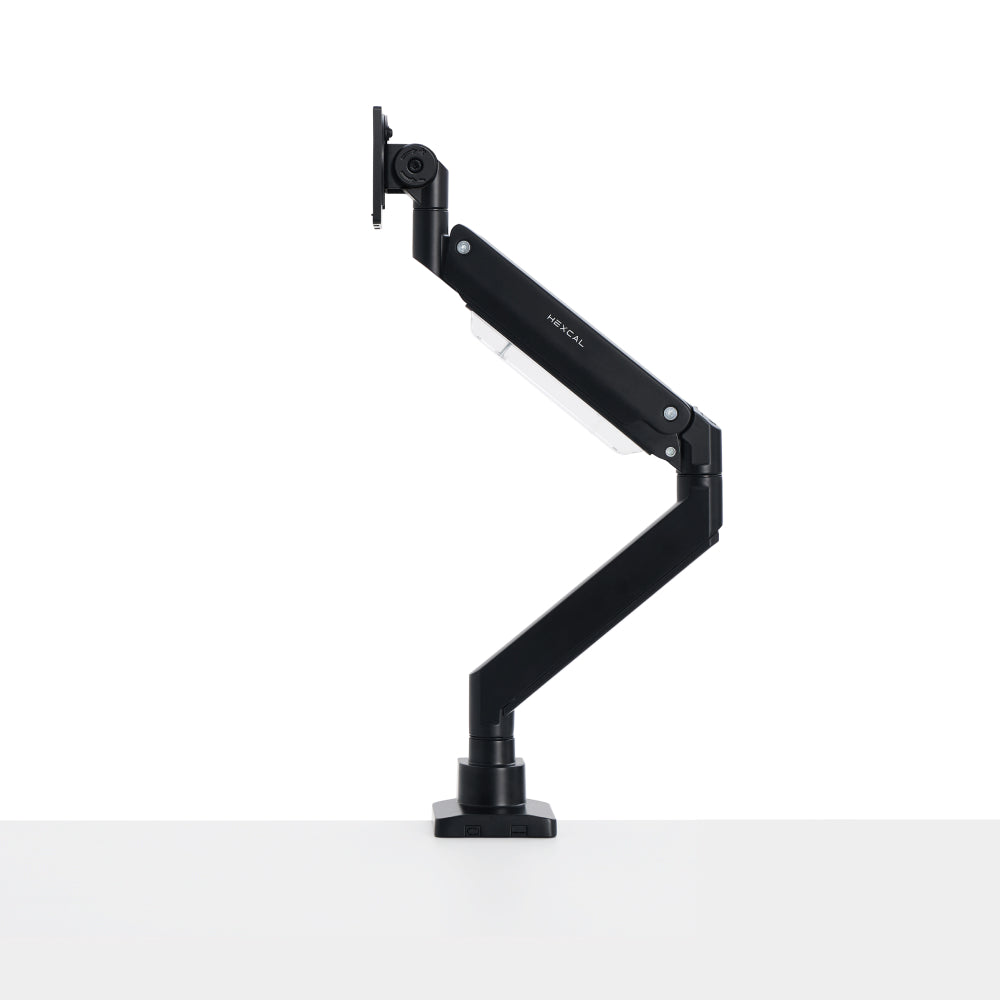
Heavy Duty Monitor Arm
The Hexcal Heavy Duty Monitor Arm is designed to support larger and heavier monitors, making it perfect for ultrawide gaming displays up to 49" and 44 lbs (20 kg), including models like the Samsung Odyssey G9, Dell Alienware AW3423DW, and LG 45" UltraGear Curved Monitor.
Both models offer discreet cable routing and sleek black finishes that integrate seamlessly with the Hexcal Elevate desk.
Step-by-Step: How to Properly Set Up Your Monitor Mount on a Standing Desk
Setting up a monitor arm is more than just attaching a few screws. It’s about creating an ergonomic flow that works with your body — not against it — and ensuring your equipment moves with you, not just sits in one position.Here's a deeper breakdown:
Step 1: Secure and Level the Desk Surface
Before installing anything, make sure your desk is:
- On a level surface — uneven footing can cause slight tilts that become magnified when monitors are raised.
- At its lowest height — this makes monitor installation easier and safer.
- If you're using a desk mat or riser platform, install it now to account for changes in surface height.
Step 2: Mount the Monitor Arm
- Clamp vs. Grommet: Choose the method that best matches your desk.
- Tighten firmly — the goal is zero movement at the base. Slight vibration at standing height becomes distracting over time.
- Make sure the mounting location gives you full range of motion for your screen without hitting walls or accessories.
Step 3: Attach the Monitor
- Secure the VESA plate to the back of your monitor using the provided screws.
- Slide or snap the plate into the monitor arm mount — Hexcal arms use a quick-release system for this.
- Double-check that the monitor is centered and level before adjusting anything else.
Step 4: Ergonomically Position the Monitor
This is the most important step — and the one most people skip.
- Height: The top edge of your screen should be at or slightly below eye level when you're standing upright, not leaning forward. This keeps your neck in a neutral position.
- Distance: Place the screen roughly one arm’s length away. This helps reduce eye strain, especially if you work with small fonts or high-res displays.
- Angle: Tilt the monitor slightly upward (~10 to 20 degrees). This supports natural eye movement and neck alignment.
- Orientation: If you use a vertical monitor or dual monitors, ensure they're aligned by eye level and distance, not just desk symmetry. Your neck follows your eyes.
Step 5: Route and Secure Cables
Clean cable routing isn’t just aesthetic — it’s functional.
- Use the built-in cable guides on the Hexcal arms to route power and display cables.
- Leave a slight slack loop near the monitor hinge to avoid tension when adjusting.
- Extra recommendation: Run the rest through Hexcal Elevate's cable management tray (if used) to keep everything out of view and out of your way.
Step 6: Test Adjustments While Standing and Sitting
With everything installed, spend 1–2 days actually using your setup. Don’t just "set and forget":
- Notice any neck tension or shoulder fatigue while standing.
- Check if you naturally lean in — a sign the screen is too far or too low.
- Adjust monitor tilt and height as needed, and don’t be afraid to tweak it again after a few days.
Remember: Ergonomics isn’t static. The best setups are those that invite small, ongoing adjustments throughout your day.
Ergonomic Best Practices When Using a Standing Desk
The right tools mean nothing without the right habits. These guidelines will help you maintain posture and reduce fatigue:
- Alternate sitting and standing every 30–60 minutes
- Elbows should remain close to your body, at about a 90° angle
- Keep wrists straight and avoid bending upward when typing
- Look straight ahead, not up or down, when viewing your screen
When you combine proper posture with the flexibility of a monitor arm, your entire setup works with you instead of against you.
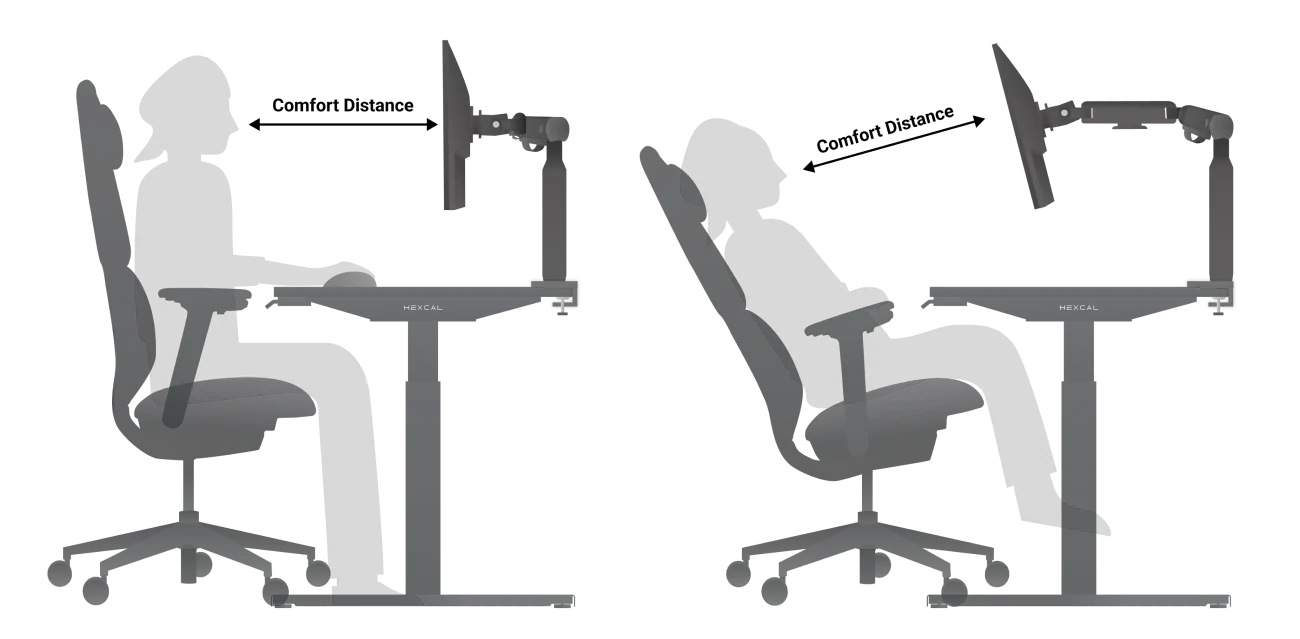
Conclusion: Build a Setup That Supports the Way You Work
A stand-up desk is a foundational step toward a healthier, more adaptive work routine. But pairing it with the right monitor arm unlocks the full ergonomic potential of your workspace. With seamless integration, intuitive adjustability, and sleek design, Hexcal’s desk and monitor solutions make posture, focus, and clarity part of your everyday workflow.
Whether you’re a remote worker, a digital creative, or simply someone investing in long-term well-being, this setup offers the structure and support to help you thrive — from 9 a.m. to late-night sessions.
Explore the full Hexcal range to build a desk that doesn't just meet your needs — it moves with you.


